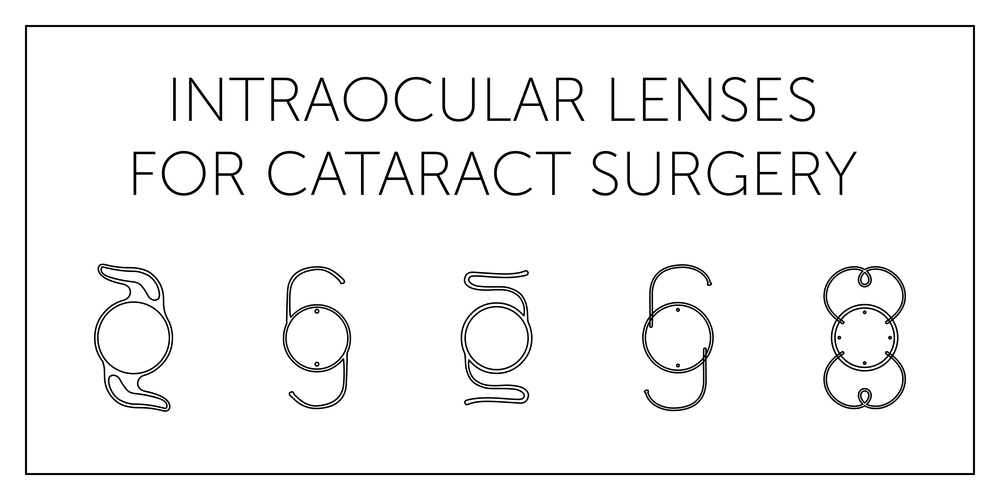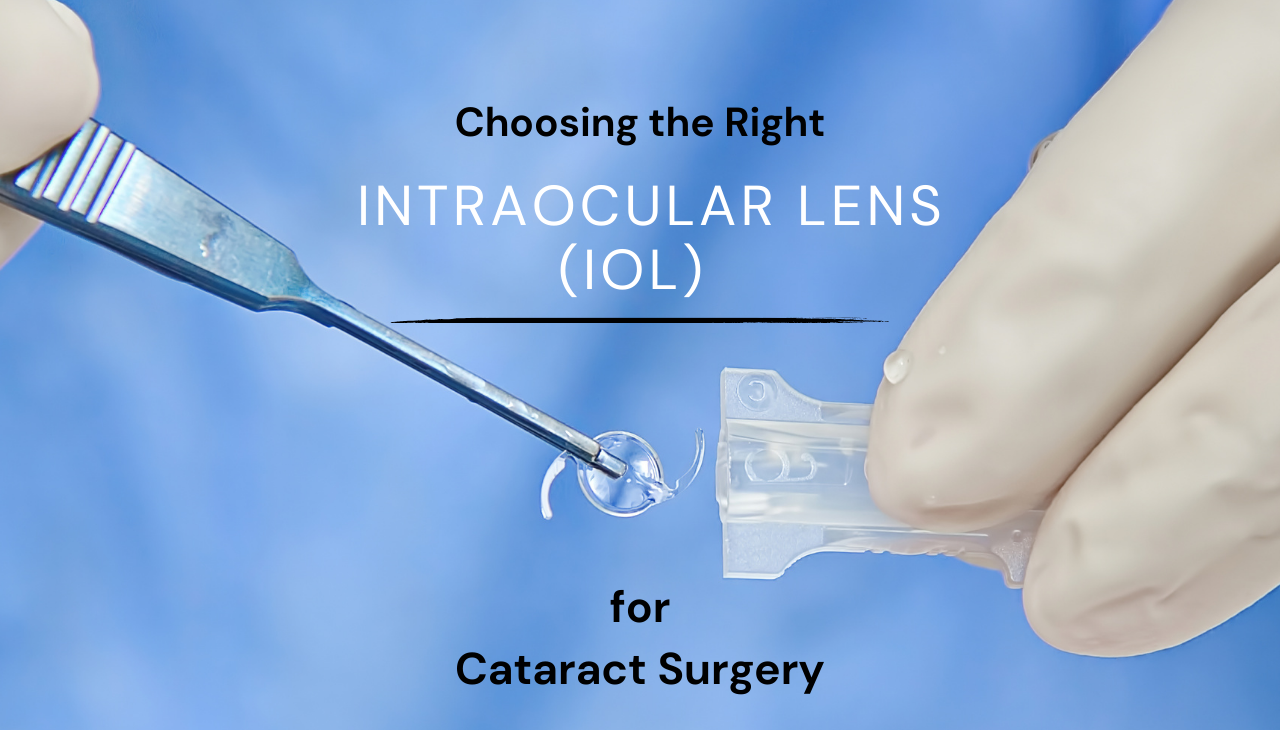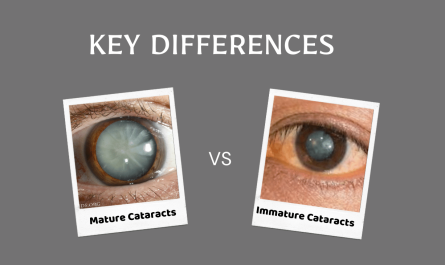Cataract surgery is a transformative procedure that restores clear vision by replacing the clouded natural lens with an artificial intraocular lens (IOL). One of the most critical decisions you’ll make during this process is choosing the right intraocular lens (IOL) for cataract surgery, as it directly impacts your vision quality and lifestyle post-surgery.

In this guide, we’ll explain the different types of IOLs, their benefits, and how to select the best option based on your needs and preferences.
What Are Intraocular Lenses (IOLs)?
IOLs are artificial lenses implanted in the eye during cataract surgery to replace the clouded natural lens. They are designed to focus light onto the retina, restoring clear vision. Over the years, advancements in IOL technology have made it possible to correct refractive errors like nearsightedness, farsightedness, and even astigmatism during cataract surgery.
Types of Intraocular Lenses
1. Monofocal IOLs
- Description: Provides clear vision at a single distance (either near or far).
- Best for: Individuals who don’t mind wearing glasses for tasks like reading or driving.
- Pros:
- Affordable.
- Excellent clarity for the chosen distance.
- Cons: Requires glasses for tasks at other distances.
2. Multifocal IOLs
- Description: Offers multiple focal points, allowing for clear vision at near, intermediate, and far distances.
- Best for: Those who want to reduce or eliminate dependence on glasses.
- Pros:
- Minimizes the need for glasses.
- Convenient for an active lifestyle.
- Cons:
- May cause glare or halos around lights, especially at night.
3. Toric IOLs
- Description: Specifically designed to correct astigmatism while addressing cataracts.
- Best for: Individuals with significant astigmatism.
- Pros:
- Improves vision clarity by correcting astigmatism.
- Reduces the need for glasses for distance vision.
- Cons:
- Glasses may still be required for reading or close-up tasks.
4. Extended Depth-of-Focus (EDOF) IOLs
- Description: Provides a continuous range of vision, especially for intermediate and distant objects.
- Best for: People who prioritize intermediate vision (e.g., for computer use) but don’t mind using glasses for very close tasks.
- Pros:
- Reduced glare and halos compared to multifocal IOLs.
- Good for activities like driving and screen use.
- Cons:
- Limited near vision capabilities.
5. Accommodating IOLs
- Description: Mimics the eye’s natural focusing ability by shifting position within the eye.
- Best for: Those seeking more natural vision without depending on glasses.
- Pros:
- Provides a good range of vision.
- Less glare compared to multifocal IOLs.
- Cons:
- May not fully eliminate the need for glasses for certain tasks.
Factors to Consider When Choosing an IOL
- Lifestyle Needs
- If you enjoy activities like reading, golfing, or computer work, discuss your priorities with your surgeon to determine the best IOL for your lifestyle.
- Budget
- Monofocal IOLs are generally covered by insurance, while premium options like multifocal and toric lenses may involve additional costs.
- Vision Goals
- Decide whether you prefer complete freedom from glasses or are comfortable wearing them occasionally.
- Existing Eye Conditions
- Conditions like macular degeneration or severe dry eyes may limit the effectiveness of certain premium IOLs.
- Surgeon’s Recommendation
- Experienced cataract surgeons can provide valuable insights into which IOL will work best for your specific eye health and lifestyle.
Steps in the IOL Selection Process
- Comprehensive Eye Exam
- Your ophthalmologist will assess your vision, eye health, and refractive errors to recommend suitable IOL options.
- Discussion of Goals
- Share your lifestyle preferences, such as whether you want to be glasses-free or prioritize certain activities.
- Review of Options
- Your surgeon will explain the pros and cons of various IOL types to help you make an informed decision.
- Customized Plan
- A tailored plan will be created to meet your vision needs, ensuring optimal outcomes after surgery.
Why Choosing the Right IOL Matters
Your choice of IOL impacts not only the clarity of your vision but also your independence and quality of life. For instance:
- Active Individuals: Multifocal or EDOF IOLs can support a glasses-free lifestyle.
- Precision Tasks: Monofocal or toric IOLs provide clear, consistent vision for specific distances.
- Comfort Seekers: Advanced lenses reduce the need for corrective eyewear and enhance convenience.
Consult Laxmi Eye Hospitals for Expert Cataract Care
At Laxmi Eye Hospitals, we are committed to providing personalized cataract solutions, including:
- Comprehensive evaluations to determine the best IOL for your needs.
- Access to advanced lens options like multifocal, toric, and EDOF lenses.
- Skilled eye surgeons who ensure a safe and seamless cataract surgery experience.
With state-of-the-art facilities in Dombivli, Panvel, Kharghar, Kamothe, we are here to restore your vision and improve your quality of life.
Book your consultation today to explore your IOL options and experience the exceptional care at Laxmi Eye Hospitals.
Conclusion
Choosing the right intraocular lens is a critical decision that can greatly influence your post-cataract surgery experience. With a variety of IOLs tailored to different needs, you can achieve vision that complements your lifestyle and preferences.
Trust the experts at Laxmi Eye Hospitals to guide you through this process and provide the best solutions for your vision restoration journey. A world of clear, vibrant sight awaits you!




